The latest report from the International Panel on Climate Change (IPCC) projects the next two decades to be critical in limiting global warming and minimizing climate variability. Achieving this will require transformations in both energy supply and demand to reduce, and where possible eliminate, GHG emissions.
As a global consumer packaged goods company, we have a responsibility to our stakeholders to reduce our greenhouse gas (GHG) emission impacts in alignment with leading science and scenario projections, while also building resiliency to acute and chronic climate events and emerging climate-related policies.
- In this Section
- Environmental Data
- GHG Emissions and Climate Change
- Water Stewardship
- Sustainability by Topic
- Collective Action
Our Commitments and Approach
Post is committed to reducing the GHG emissions in our direct operations (Scope 1 and Scope 2)
with a goal of 30% reduction by 2030.
Post is committed to reducing the GHG emissions in our supply chain (Scope 3) with a goal of 30% reduction in emission intensity from sourced ingredients and packaging by 2030.
Weetabix is committed to becoming a net zero business by 2050 and made a formal commitment to the Science Based Targets initiative (SBTi) in 2023.
Our approach to pursuing GHG reduction in our direct operations (Scope 1 and 2) is based upon the following phases:
| Phase | Year | Theme | % Reduction Range |
|---|---|---|---|
| Phase 1 | 2021 | Set goal and baseline | 0% |
| Phase 2 | 2022 | Inventory recent and planned projects, plan site assessments, share best practices | 5% |
| Phase 3 | 2023-2024 | Implement high return on investment opportunities and best practices, drive optimization culture specific to energy and GHG emissions, evaluate capital investments | 5-10% |
| Phase 4 | 2025-2027 | Realize benefits of capital investments and take advantage of more accessible renewable energy sourcing options | 10-15% |
| Phase 5 | 2027-2030 | Strategically pursue closing the goal gap including leveraging available innovations and technologies | 5% |
Post is pursuing energy and GHG reductions across all of our businesses with a focus on energy sourcing and optimization of processes and equipment. For example:

- Weetabix switched to purchasing renewable electricity and conducting annual Scope 1, 2 and 3 carbon footprint assessments.
- Post Consumer Brands and Michael Foods businesses pursuing solar energy projects.
- Michael Foods joined the Department of Energy (DOE) Better Plants Program.
Compared to our fiscal year 2020 goal baseline, Post has increased production volume by 17% and decreased scope 1 and 2 GHG emissions intensity by 18%.
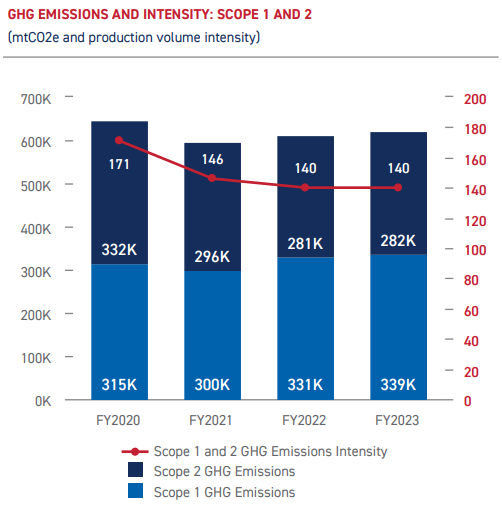
Post released a data correction due to identified errors with natural gas calculations for two production sites, which changed the above performance data compared with our 2022 ESG report.
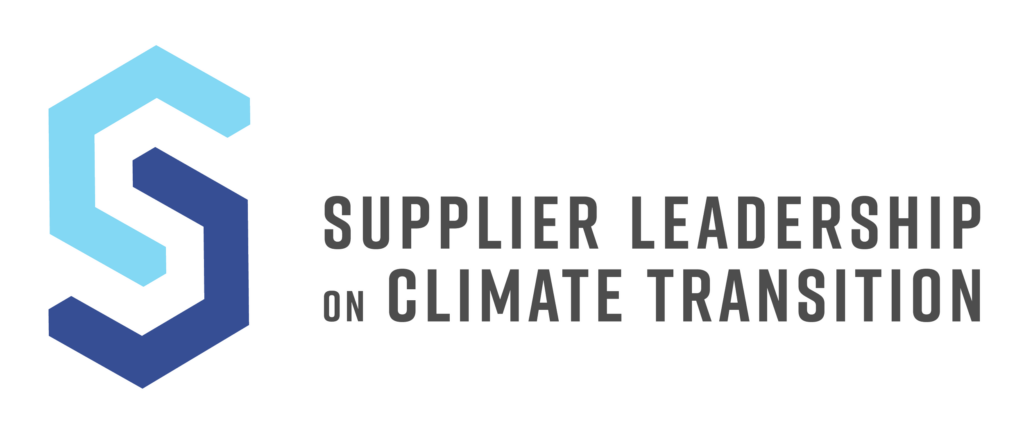

Post is also pursuing GHG reductions and climate resiliency in our supply chain (Scope 3) with our upstream (sourcing and packaging) and downstream (transportation, logistics and retail) supply chain partners. For example:
- Post joined CDP Supply Chain and requested GHG data from packaging and ingredient suppliers in 2023 representing ~80% of global spend and also joined the Supplier Leadership on Climate Transition (Supplier LoCT) program to support suppliers with advancing their GHG and climate programs.
- Validating that 40% of our top packaging and ingredient suppliers have public commitments to reduce GHG emissions and over half participate in annual CDP Supply Chain submittals.
- Airly® using advanced carbon farming practices to produce snack crackers.
- Weetabix sourcing 100% of wheat for Weetabix Original within 50 miles of their factory and growers abiding by their Wheat Protocol.
Our most up-to-date Scope 1, 2 and 3 GHG emissions data is available here.
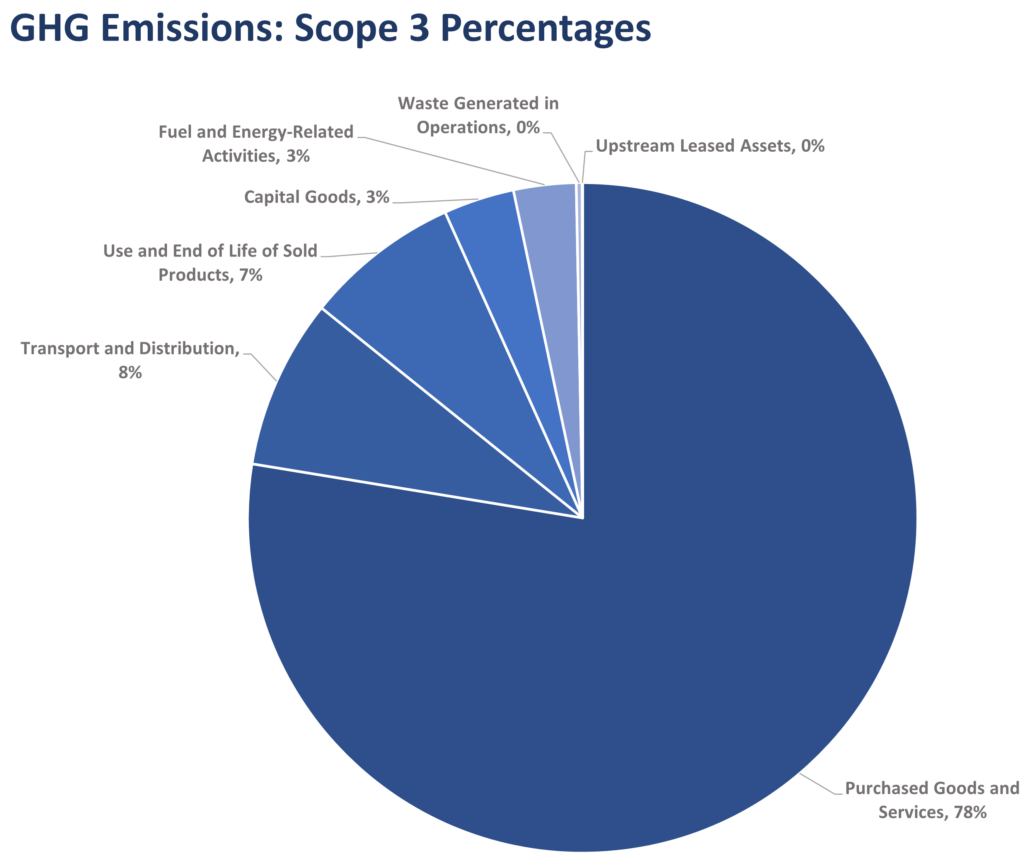
For the largest category of scope 3 GHG emissions, purchased good and services, the following sub-categories are estimated to be the largest contributors:
73% – Agricultural-based ingredients and raw materials
14% – Electricity, gas and water supply
6% – Pulp and paper, rubber, plastics
The remaining emissions are split across multiple small portion sub-categories.
Task Force on Climate-related Financial Disclosures (TCFD)
Post is committed to demonstrating alignment with recommendations of the Task Force on Climate-related Financial Disclosures (TCFD), including an annual TCFD Disclosure, and also participates in the annual CDP Climate disclosure.
For climate change, Post maintains a TCFD-aligned global assessment of climate risks and opportunities with the following core elements:
- Consideration of three categories of factors based upon TCFD recommendations:
- Acute Physical Factors
- Extreme weather (avalanches/winter weather/cold waves, earthquakes, hail, hurricanes, ice storms, landslides, lightning, strong winds/tornadoes, tsunamis, volcanic activity, and wildfires)
- Inland/Riverine Floods
- Chronic Physical Factors
- Water stress (availability and quality)
- Drought / Heat waves
- Coastal Floods / Sea level rise
- Biodiversity and sensitive habitats
- Transition Factors
- Country-level (e.g., United Nations Framework Convention on Climate Change (UNFCC) Nationally Determined Contributions (NDC) Registry)
- Location-specific contextual data from various sources (e.g., energy mix, utility renewable energy targets, net metering status, and carbon pricing mechanisms)
- Acute Physical Factors
- Evaluation of all global operational locations using leading external datasets.
- Completion of a Facility Climate Risk Applicability Survey by all global production locations.
- Consolidation of data into an analysis tool.
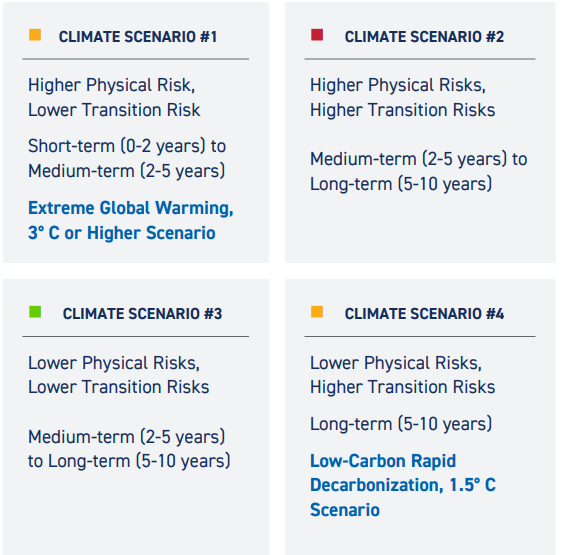
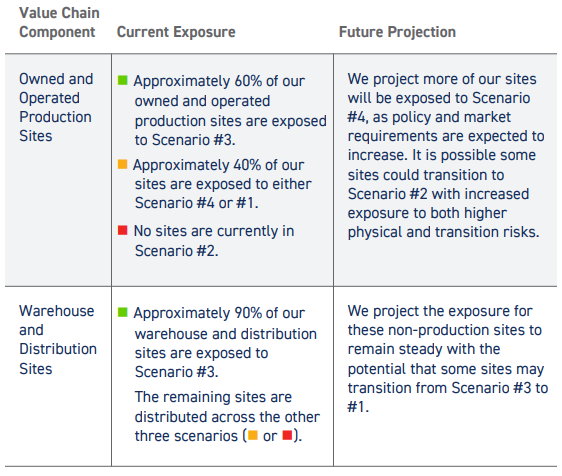
Post is in the process of further evaluating our raw material sourcing from direct and indirect suppliers following a similar four-scenario method to what was used for our owned and operated sites. Post completed a baseline screening of approximately 2,300 global ingredient and packaging supplier locations to evaluate proximity to water stressed regions and areas of high biodiversity. Additional detail on these assessments is available on the following pages: Water Stewardship and Sustainability by Topic.
